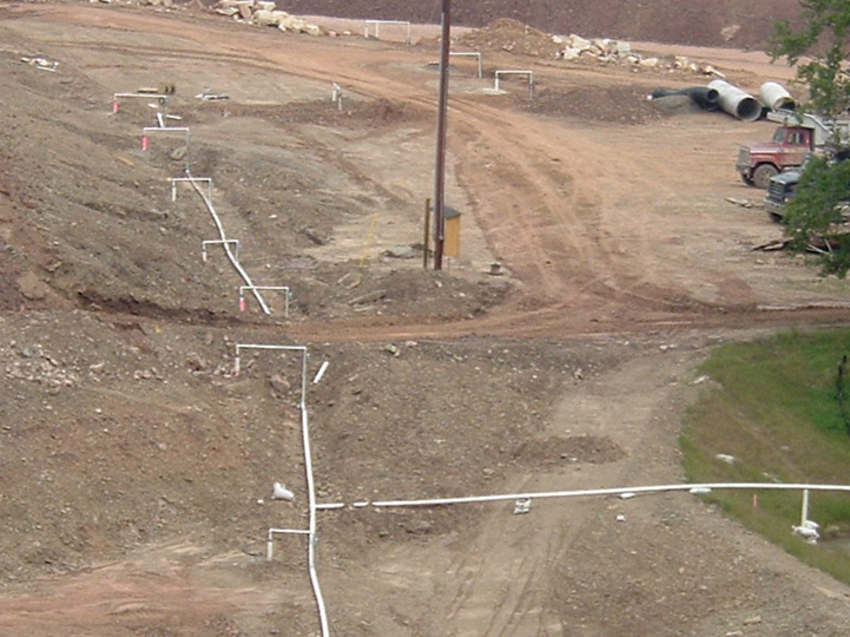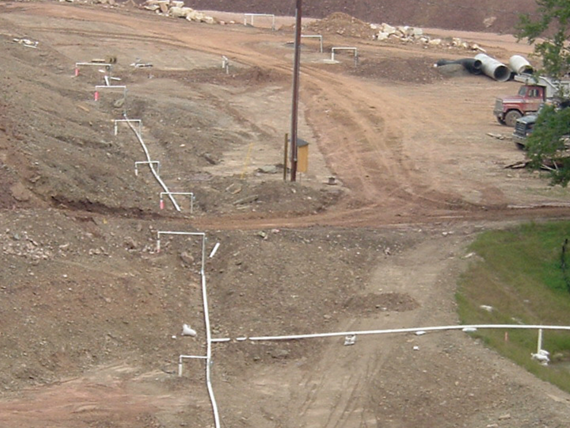Keller designed and installed a deep well system for groundwater control during construction of a new roller compacted replacement dam.

The project
Constructed in 1949, the original Lyman Run Dam was an earth-filled structure, 920 ft long and 50 ft high, with a top width of 14 ft. The dam, which retained a 45-acre recreational lake, had experienced heavy seeps and leakage and has been monitored almost since construction. Fifty years after construction, structural analyses showed the dam to be unsafe. Subsequently, the lake was drawn down and the dam was breached to allow in- depth examination. The extent of the structural defects necessitated complete replacement.
The challenge
Subgrade of the core trench excavation for the new, roller compacted-concrete dam varied between elevations +1577 and +1625 ft. Groundwater was encountered at elevation +1605 ft. Excavation below the groundwater table extended between stations 1+20 and 11+25. Keller (formerly Moretrench) designed and installed the dewatering system that ensured excavation and core construction in the dry.
The solution
Keller’s design involved 43 deep wells installed at approximately 50 ft on center on both sides of the proposed trench alignment, together with approximately 3,000 linear feet of piping and electrical distribution. The wells were constructed using mud rotary drilling techniques to advance a nominal 8-inch diameter borehole through the overburden soils and into the underlying decomposed rock to a depth of 20 ft below the anticipated foundation grade. Each well was equipped with a submersible pump, capable of pumping 10 to 24 gallons per minute, and an above-grade control panel. The system was run continuously during excavation below the groundwater table. Pumped water was directed to detention ponds and ultimately discharged into Lyman Run Creek.
